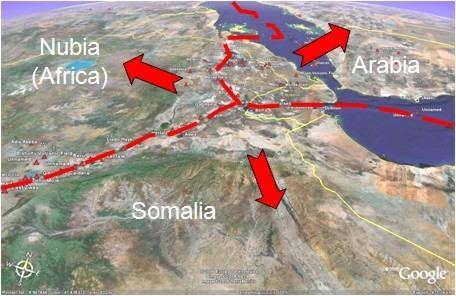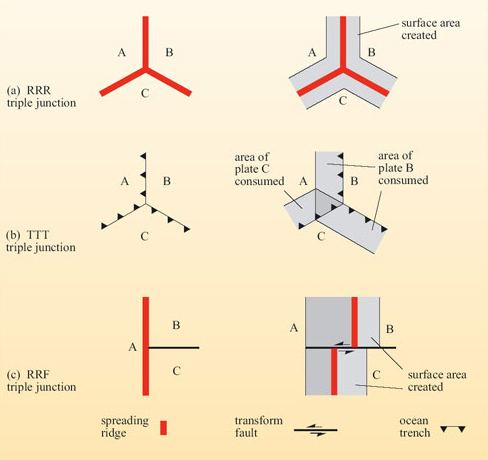 | ||
Lecture 2 5 triple junctions
A triple junction is the point where the boundaries of three tectonic plates meet. At the triple junction each of the three boundaries will be one of 3 types - a ridge (R), trench (T) or transform fault (F) - and triple junctions can be described according to the types of plate margin that meet at them (e.g. Transform-Transform-Trench, Ridge-Ridge-Ridge, or abbreviated F-F-T, R-R-R). Of the many possible types of triple junction only a few are stable through time ('stable' in this context means that the geometrical configuration of the triple junction will not change through geologic time).
Contents
- Lecture 2 5 triple junctions
- Triple junction evolution wax model
- History
- Examples
- Interpretation
- References

Triple junction evolution wax model
History
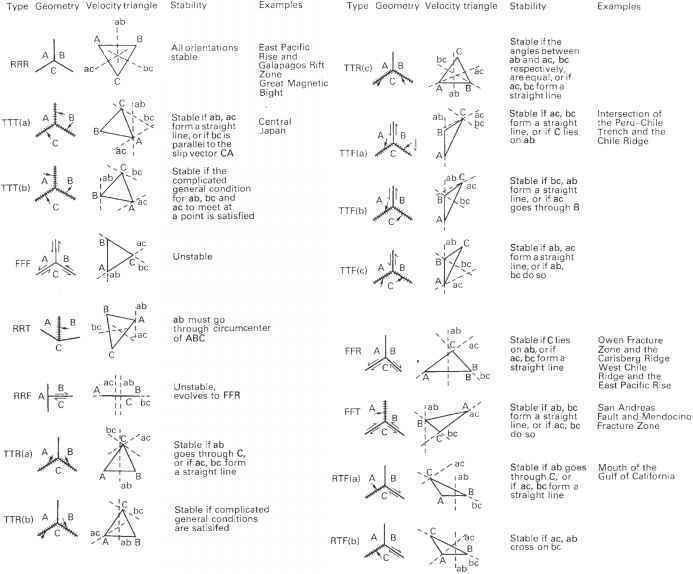
The first scientific paper detailing the triple junction concept was published in 1969 by W. Jason Morgan, Dan McKenzie, and Tanya Atwater. The term had traditionally been used for the intersection of three divergent boundaries or spreading ridges. These three divergent boundaries ideally meet at near 120° angles.
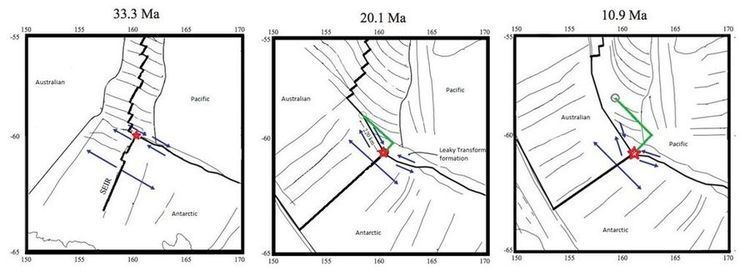
In plate tectonics theory during the breakup of a continent, three divergent boundaries form, radiating out from a central point (the triple junction). One of these divergent plate boundaries fails (see aulacogen) and the other two continue spreading to form an ocean. The opening of the south Atlantic Ocean started at the south of the South American and African continents, reaching a triple junction in the present Gulf of Guinea, from where it continued to the west. The NE-trending Benue Trough is the failed arm of this junction.
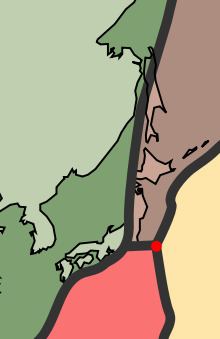
In the years since, the term triple-junction has come to refer to any point where three tectonic plates meet.
Examples

Interpretation

The properties of triple junctions are most easily understood from the purely kinematic point of view where the plates are rigid and moving over the surface of the Earth. No knowledge of the Earth's interior or the geological details of the crust are then needed. Another useful simplification is that the kinematics of triple junctions on a flat Earth are essentially the same as those on the surface of a sphere. On a sphere, plate motions are described as relative rotations about Euler Poles (see Plate reconstruction), and the relative motion at every point along a plate boundary can be calculated from this rotation. But the area around a triple junction is small enough (relative to the size of the sphere) and (usually) far enough from the pole of rotation, that the relative motion across a boundary can be assumed to be constant along that boundary. Thus, analysis of triple junctions can usually be done on a flat surface with motions defined by vectors.
